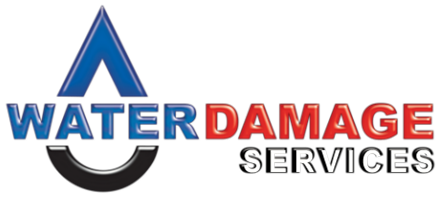What Are the Most Common Causes of Water Damage?
There are many causes of water damage with the obvious one being Flooding. However, there are many things that can cause water damage to occur in your home or office. On this page Water Damage Services will offer a brief overview of the most common causes of water damage.
Severe Weather
Heavy rain, thunderstorms, flash floods and hurricanes can all be considered as severe weather. Unusually strong winds followed by heavy downpours can cause damage to roofs and allow water to seep through. The result of which can cause flooding that will go on to wreak havoc in your home and cause considerable damage, all of course, depending on the severity of the weather event.
Clogged Gutters
This is so common and possibly the most overlooked simple answer to avoid internal water damage. When our gutters get even slightly clogged with a few leaves, small branch twigs, and other roof debris, the gutters simply cannot effectively do the job of draining the rainwater to your downpipes and away from the house. Your clogged gutter/s will overflow with some water going outside and the rest going under your roofing and into your internal ceilings. The heavier the rain, the more severe the damage. You may not even see the water building up above your ceiling panels until it is too heavy and begins to leak and eventually break.
Leaking Pipes
Most pipes are a plastic composition and after being subjected to cold and heat with long term service they can often leak or burst due to fatigue and temperature changes. In saying that, it is important to know that the extent of the damage can vary depending on the composition type of the pipe with the leak. Even a minor leak in a bathroom or kitchen sink could lead to replacing a cabinet, whereas a hidden broken pipe inside the walls of your home could be undetected and lead to a more sever outcome in that the prospect of replacing entire walls would become a reality, which would likely be much more costly.
Problems with Appliances
Washing machines tend to ‘wiggle’ while on a spin cycle and after many of these ‘spins’, it is likely the water feed fittings in and out will have been weakened with the continuous shaking. This will often cause a leak or rupture in a washing machine water supply line or even an aging and/or malfunctioning water heater system which will mean that the in or out (or both) water system can result in the water not ending up in the outlet where it’s supposed to be. When you have any appliances connected to a water supply which experience a malfunction, and you are not there to attend to the problem immediately, an entire room can flood in minutes together with outlying rooms.
Condensation from AC Units
For those homes, offices and buildings that run air conditioners it is important to note that they produce condensation. The level of condensation will depend upon the external heat and the required internal temperature. If an AC unit is malfunctioning by blocked or frozen pipes and even given that the condensation drain flow level is not a flood, the moisture is still unable to run off to the correct drainage system provided resulting in the dripping water damaging floors, flooring, walls, and ceilings.
Blocked Drains
This is a very obvious and common occurrence. Even partly clogged kitchen or bathroom drains can restrict water from draining properly and subsequently create a backup in the pipes. This may slowly leak away but in the event the drains are subjected to multiple use throughout the house at a similar time, the ‘leak away’ scenario will be overridden and the end result will undoubtable be an overflow or even flooding inside the property. It is also worth remembering that overflows can occur with sinks, tubs and baths when people forget to turn them off or something is blocking the drain outlet in the sink.
What Are the Biggest Concerns with Water Damage?
Regardless of what sort of water damage occurs, there are always various problems and more importantly, health risks. It is crucial for me to note here that most of this will get significantly worse should it be left untreated. Giving consideration to property structural damage, mould, bacteria and mildew growth, stale smells, and electrical damage, herewith a broad timeline of what one can expect from any water damage that doesn’t get effectively treated by a professional or at least, an individual who holds some knowledge about water damage and treatments:
Within Minutes
Carpets and floor coverings begin to absorb water. Furniture feet and base boards treatments will mix with the water and carpets, rugs and vinyls begin to stain. Depending on flood levels, cherished personal belongings like photos, keepsakes and paperwork may be devastated.
Within Hours
Humidity will increase significantly resulting in the house beginning to sweat and smell while cabinetry and furniture will commence the initial stages of deterioration. And take this advice seriously — within 48 hours or less, whilst you may only have experienced a sink overflow, that clean or grey water can get far worse and begin to turn into toxic black water.
Within Days
Now the situation is getting severe. After just a few days you will see the onset of fungi and mould setting in, putting down roots and causing foul odours. At this point, the floors and walls mentioned previously have likely deteriorated to the point of no return and will require total replacement. Whilst the structural wood within the home is stronger than wall boards and flooring, it is highly likely they would have begun swelling and as the weather and temperature in and around the house increases, expect splitting.
Within Weeks
If, for whatever reasons, the water damage is left untreated for weeks on end, it is almost certainly likely that the home is now hazardous and even uninhabitable for the most studious of us. Drywall is already crumbling, and the moisture has crept higher up the wall. But now the home’s structural fatigue becomes a very serious discussion point. The home may still be salvageable at this stage, but restorations will be extensive and costly.
Within Months
Now here we are at the sharp end of the stick. Depending on the construction materials, layout design and property drainage, it is remains highly likely that after months of effective neglect, the resulting damages will cost more than the price of the home resulting in the house becoming unsalvageable. A sidebar to this is that it is extremely probable that the owner has effectively breached many of the insurance policy conditions due to neglect and failure to advise (or follow up) with the insurers and as a consequence of that, the insurance company will view this as a claim that could have been avoided and the subsequent severity of damage would have been less had it been dealt with earlier.

